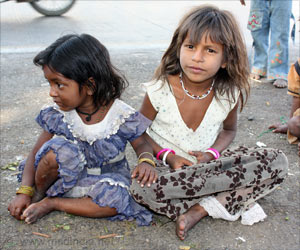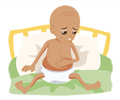Reducing child poverty in England could greatly improve child health and narrow health inequalities, especially in the most deprived regions.

Implications of child poverty reduction targets for public health and health inequalities in England: a modelling study between 2024 and 2033
Go to source). And it would likely have other beneficial knock-on effects on local authority and health services, suggest the researchers.
‘Almost 21% of children in #England lived in #poverty in 2023. This is a crisis. We need urgent action to protect our kids. #childpoverty #UK #inequality’





Child Poverty: A Root Cause of Health Inequalities
Child poverty is a key determinant of population health and health inequalities. Experience of it is associated with worse outcomes across a wide range of early years health indicators, with evidence suggesting that these associations are often causal, explain the researchers.Countries, such as the UK that opted for austerity in the wake of the global 2008 financial crisis, have had worse trends in child health outcomes than those that maintained or increased their welfare spend, they add.
And the impact of the COVID-19 pandemic and the ongoing cost of living crisis have heightened concerns about rising levels of child poverty in the UK in the absence of government policies specifically addressing these, say the researchers.
Such policies include targeted measures to supplement income such as the Child Tax Credit and increases in Child Benefit (without a ‘two-child limit’), alongside other measures to improve early years services such as Sure Start programmes.
The researchers therefore assessed the potential impact of 3 different child poverty reduction targets on child health outcomes and inequalities in England over the next decade, drawing on outcomes that are associated with poverty and deprivation in childhood, and for which official data were available.
Advertisement
Child poverty was defined as the proportion of children under the age of 16 living in families with an income below 60% of the contemporary national average.
The researchers considered these figures to be realistic in light of the 26% fall in the prevalence of child poverty observed in the UK between 1997 and 2010 under a previous Labour government.
Their projections showed that all 3 targets would substantially improve child health. But increasingly ambitious targets corresponded to greater benefits, with orders of magnitude for the high ambition reduction target around double those for the low ambition target across all 4 outcomes.
Meeting the high ambition target would be expected to cut total numbers of infant deaths by 293; children entering care by 4696; hospital admissions for nutritional anaemia by 458; and childhood emergency admissions by 32,650 between 2024 and 2033.
This compares with 155 fewer infant deaths; 2483 fewer children entering care; 242 fewer hospital admissions for nutritional anaemia; and 17,266 fewer childhood emergency admissions for meeting the low ambition target.
Northern regions of England, especially the North East, would stand to gain the most, as would the most deprived areas of the country were the high ambition reduction target met, the projections indicate.
Here, the total numbers of infant deaths would be projected to fall by 126 compared with a fall of 71 in the least deprived between 2024 and 2033.
Similarly, 1907 fewer children would be expected to enter care (vs 1199), there would be 189/year fewer admissions for nutritional anaemia (vs 117) and 13,302 fewer childhood emergency admissions (vs 8322) in the least deprived areas.
While these figures are projections rather than actual numbers, they are based on few assumptions and realistic targets, say the researchers. But they acknowledge that only 4 indicators of child poverty were used and that emergency admissions can be affected by health service access.
But they nevertheless suggest: “These reductions [in child poverty] would likely translate into significant savings for, and relieve pressure on, local authorities (in relation to children looked after) and health services. Benefits are likely to be greatest in the most disadvantaged areas, helping efforts to ‘level up’. Other health impacts that we have not been able to quantify are also likely.”
And they conclude: “We highlight that if policy-makers were to set and achieve child poverty targets for England—for example, through suggested measures, such as removing the two-child limit and benefit cap—this would likely improve child health, particularly among the most socioeconomically disadvantaged and ‘level up’ regional inequalities.”
Reference:
- Implications of child poverty reduction targets for public health and health inequalities in England: a modelling study between 2024 and 2033 - (https://jech.bmj.com/content/early/2024/07/08/jech-2024-222313)
Source-Eurekalert












